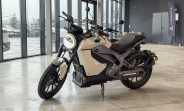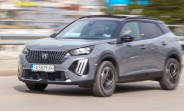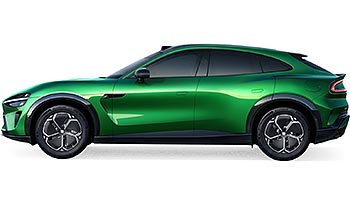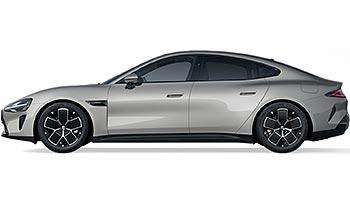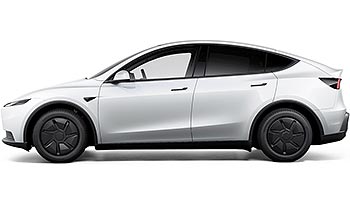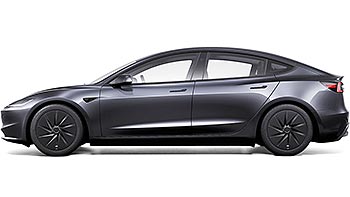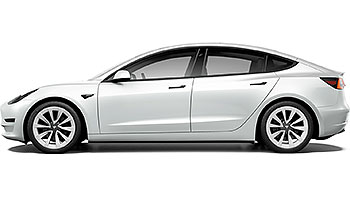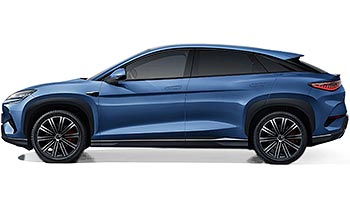Road test reveals how much energy can EVs really recuperate

Electric vehicles aren't just a cleaner mode of transport; they offer a smarter way to manage energy with a unique feature called recuperation. This process allows EVs to cleverly reclaim energy, otherwise normally lost as heat during braking. But how much energy is actually recovered, and how does this technology impact overall efficiency? The German ADAC decided it was time to answer this question - once and for all.
What happens when your EV is cruising along and you ease off the accelerator or gently apply the brakes? The electric motor, which normally propels the vehicle, seamlessly switches roles. It becomes a generator, harnessing the kinetic energy of the car's motion and converting it back into electricity that replenishes the battery.
 ADAC tested Tesla Model Y's recuperation
ADAC tested Tesla Model Y's recuperation
The amount of energy an EV recovers through recuperation depends on a few key things. Heavier vehicles may consume more energy to accelerate, but their momentum helps them generate more electricity during braking. Similarly, electric motors with higher power ratings are better at converting braking energy back into electricity. Additionally, the best time to maximize recuperation is in city driving. Constant stopping and starting gives the system lots of opportunities to recapture energy. Recuperation is less effective on highways with their consistent speeds and limited braking.
To illuminate these factors, the German automobile club ADAC conducted a fascinating experiment. They tested three EVs - the nimble Dacia Spring, the luxurious BMW i7, and the best-selling Tesla Model Y Long Range - on an uphill and downhill route. Not surprisingly, the hefty BMW i7 came out on top in downhill energy recovery. However, the lighter Dacia Spring turned out to be the most efficient overall during the mountainous journey. This underscores the delicate balance between energy consumption and recuperation – while heavier EVs may recover more, they also need more power to move in the first place.
| Dacia Spring | Tesla Model Y | BMW i7 | |
|---|---|---|---|
| Energy used up the hill | 26.35 kWh/62 miles | 48.74 kWh/62 miles | 59.34 kWh/62 miles |
| Energy used down the hill | -7.05 kWh/62 miles | -17 kWh/62 miles | -26.27 kWh/62 miles |
| Energy recovered | circa 35% | circa 40% | circa 50% |
| WLTP energy use | 14.5 kWh/62 miles | 16.9 kWh/62 miles | 18.5 kWh/62 miles |
Beyond mountainous routes, how do EVs fare in regular driving? Data from Green NCAP reveals that - on average, an EV recaptures around 22% of its driving energy through recuperation. Standout EVs like the Nio ET7 and Hyundai Ioniq 6 boast impressive figures of 31% and 29%, respectively.
While recuperation partially offsets the energy penalty of heavier EVs, it emphasizes the potential of lightweight construction. Innovative materials and designs hold the key to maximizing EV efficiency. Reducing a vehicle's weight is similar to giving your EV a continuous energy boost, both when accelerating and while using recuperation.
 This is how much energy modern EVs recuperate during standard WLTP range test
This is how much energy modern EVs recuperate during standard WLTP range test
There are some simple tricks you can use to get the most out of your EV's recuperation system. In colder weather, warm up your battery before you drive – cold batteries can limit how effective the system is. If you're heading into hilly terrain, leave a bit of buffer in your battery rather than charging to 100%. This gives you space to store the extra energy you'll generate on those descents. Finally, many EVs let you adjust the strength of the recuperation. Crank it up for city driving, where you'll be braking frequently, to maximize energy recapture.
Related
Reader comments
- Anonymous
How are the energy recovered percentages calculated? They do not seem to be correct when you divide the energy recovered downhill by the energy used uphill, especially for the first vehicle.
- 24 Jun 2024
- jJ}
- mild regen
Excellent read. Keep up the good work. Let's sort out the distinction between full-regen and mild-regen. And educate the public.
- 27 Mar 2024
- qyn
Right but it works for "when leaving your mountain chalet and returning to the city," don't be at 100% or you won't have any regen until the bottom.
- 26 Mar 2024
- jx2
